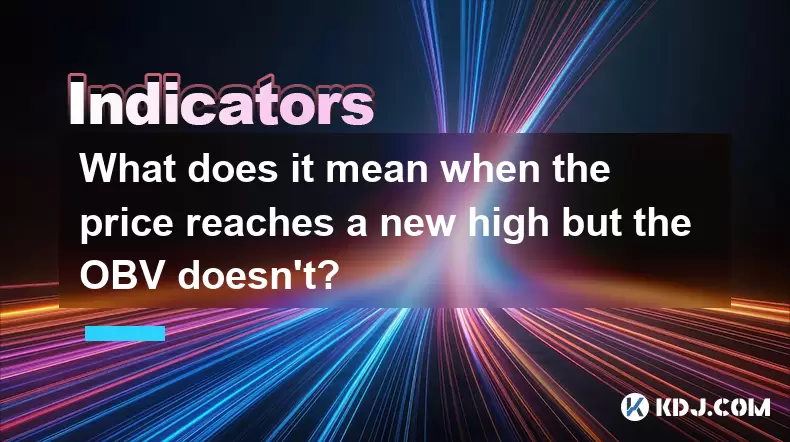-
 Bitcoin
Bitcoin $115100
-1.30% -
 Ethereum
Ethereum $4758
-1.70% -
 XRP
XRP $3.027
-2.19% -
 Tether USDt
Tether USDt $0.9998
-0.01% -
 BNB
BNB $883.2
-1.42% -
 Solana
Solana $204.0
2.62% -
 USDC
USDC $1.000
0.02% -
 Dogecoin
Dogecoin $0.2371
-0.97% -
 TRON
TRON $0.3612
-1.24% -
 Cardano
Cardano $0.9128
-2.19% -
 Chainlink
Chainlink $26.13
-3.93% -
 Hyperliquid
Hyperliquid $44.73
0.90% -
 Sui
Sui $3.715
-0.56% -
 Stellar
Stellar $0.4153
-2.41% -
 Ethena USDe
Ethena USDe $1.000
-0.04% -
 Bitcoin Cash
Bitcoin Cash $588.9
-2.06% -
 Avalanche
Avalanche $25.91
3.27% -
 Hedera
Hedera $0.2525
-1.45% -
 Litecoin
Litecoin $120.9
-1.35% -
 UNUS SED LEO
UNUS SED LEO $9.607
0.30% -
 Toncoin
Toncoin $3.382
-0.31% -
 Shiba Inu
Shiba Inu $0.00001329
-0.38% -
 Uniswap
Uniswap $11.38
-1.67% -
 Polkadot
Polkadot $4.222
2.83% -
 Aave
Aave $354.5
4.93% -
 Dai
Dai $0.0000
0.00% -
 Bitget Token
Bitget Token $4.704
-1.49% -
 Cronos
Cronos $0.1565
1.83% -
 Ethena
Ethena $0.7463
1.55% -
 Monero
Monero $265.8
-0.39%
What does it mean when the price reaches a new high but the OBV doesn't?
When price hits a new high but OBV doesn’t, it signals bearish divergence—rising price without volume support, hinting at weakening momentum and potential reversal.
Aug 13, 2025 at 11:35 am

Understanding the On-Balance Volume (OBV) Indicator
The On-Balance Volume (OBV) is a momentum indicator that uses volume flow to predict changes in stock or cryptocurrency prices. Developed by Joe Granville, OBV operates under the assumption that volume precedes price movement. The calculation is straightforward: if today’s closing price is higher than yesterday’s, the day’s volume is added to the previous OBV value. If the closing price is lower, the volume is subtracted. If the price remains unchanged, OBV stays the same. This cumulative approach creates a running total of volume, reflecting buying and selling pressure over time. Traders use OBV to confirm trends or detect potential reversals. A rising OBV suggests accumulation, while a falling OBV indicates distribution.
What Happens When Price Makes a New High But OBV Doesn’t?
When the price reaches a new high but the OBV fails to confirm with a corresponding peak, this scenario is known as a bearish divergence. It indicates that although the price is climbing, the volume behind the upward movement is weakening. In the context of cryptocurrency trading, this could mean that fewer participants are actively buying at higher prices, suggesting a lack of conviction among buyers. The new price high may be driven by limited volume, possibly due to short covering or speculative momentum rather than strong demand. This mismatch between price and volume can signal that the uptrend is losing steam and may be vulnerable to a pullback or reversal.
Interpreting the Divergence in Crypto Markets
In the cryptocurrency market, where volatility and sentiment play significant roles, OBV divergence can be especially telling. For instance, if Bitcoin reaches a new all-time high but the OBV line plateaus or declines, it implies that the rally lacks broad-based support from volume. This could be due to whales manipulating the price, algorithmic trading bots creating artificial spikes, or retail traders FOMOing into a trend without sustained buying pressure. The absence of volume confirmation raises concerns about the sustainability of the upward move. Traders monitoring OBV may interpret this as a warning sign to tighten stop-losses, take partial profits, or prepare for a potential short position.
How to Identify and Confirm the Divergence
To detect this divergence, traders must overlay the OBV indicator on the price chart and visually compare the trendlines. The following steps outline the process:
- Open a charting platform such as TradingView or MetaTrader and load the cryptocurrency pair of interest.
- Apply the OBV indicator from the studies or indicators menu.
- Zoom out to view at least several weeks of price and volume data to identify major swing highs.
- Draw a trendline connecting the most recent price highs and another trendline connecting the corresponding OBV peaks.
- If the price trendline is rising to a new high while the OBV trendline is flat or descending, a bearish divergence exists.
- Confirm the signal by checking for additional signs such as overbought conditions on the RSI or a break below a key moving average.
This method allows traders to objectively assess whether volume is supporting the price action.
Strategic Responses to OBV-Price Divergence
When a divergence is identified, traders can take several actions depending on their strategy and risk tolerance. Those using OBV as a confirmation tool may consider the following:
- Reduce long exposure by closing a portion of their position to lock in profits.
- Set tighter stop-loss orders just below recent support levels to protect gains.
- Avoid entering new long positions until volume resumes and confirms the trend.
- Watch for a confirmed breakdown, such as a close below a key support level, before initiating short positions.
- Combine OBV analysis with other volume-based indicators like Volume Profile or VWAP for stronger confirmation.
It’s important to note that divergence alone does not guarantee a reversal. Some strong trends can exhibit extended periods of divergence before correcting. Hence, risk management remains essential.
Common Misinterpretations and Pitfalls
Traders sometimes misread OBV signals, especially in low-liquidity altcoins where volume data can be unreliable. For example, a sudden spike in price due to a single large trade might not reflect genuine market sentiment, yet it still affects the OBV calculation. Additionally, exchanges with manipulated volume (often referred to as "wash trading") can distort OBV readings, making divergence signals less trustworthy. To mitigate this, traders should focus on major cryptocurrencies with high trading volume and use exchanges with transparent, verifiable data. Comparing OBV across multiple timeframes—such as daily and 4-hour charts—can also help distinguish between noise and meaningful divergence.
Frequently Asked Questions
Can OBV divergence occur in a downtrend?
Yes. In a downtrend, if the price makes a new low but OBV fails to reach a new low (i.e., OBV forms a higher low), this is called a bullish divergence. It suggests that selling pressure is weakening, potentially signaling a reversal to the upside.
Does OBV work the same way on all timeframes?
OBV functions consistently across timeframes, but its reliability increases on higher timeframes like daily or weekly charts. Shorter timeframes (e.g., 5-minute) may produce frequent false signals due to market noise and short-term volatility.
Is OBV effective for all cryptocurrencies?
OBV is most effective for assets with consistent and genuine trading volume. It may be less reliable for low-cap altcoins or tokens with irregular trading activity, where volume can be easily manipulated.
How can I adjust OBV settings for better accuracy?
The standard OBV has no adjustable parameters since it’s a cumulative sum. However, traders often apply a moving average to the OBV line (e.g., 10-period EMA) to smooth it and identify trend direction more clearly. This modified version can help filter out minor fluctuations.
Disclaimer:info@kdj.com
The information provided is not trading advice. kdj.com does not assume any responsibility for any investments made based on the information provided in this article. Cryptocurrencies are highly volatile and it is highly recommended that you invest with caution after thorough research!
If you believe that the content used on this website infringes your copyright, please contact us immediately (info@kdj.com) and we will delete it promptly.
- Whitelist Frenzy: Is This the Top Meme Coin of 2025?
- 2025-08-24 08:45:22
- Ruvi AI: The AI Token Igniting a Cardano-esque Rally?
- 2025-08-24 07:45:12
- Altcoins in a Market Dip: Is Polygon (MATIC) Poised for a Reversal?
- 2025-08-24 07:05:13
- Crypto, Pepe, and Investment: Navigating the Meme Coin Mania in 2025
- 2025-08-24 06:45:29
- VanEck's JitoSOL ETF: A New Era for Solana and Institutional Crypto
- 2025-08-24 07:45:12
- Dogecoin, Shiba Inu, and the Rise of New Crypto Contenders
- 2025-08-24 08:05:30
Related knowledge

What does it mean when the +DI and -DI cross frequently in the DMI indicator but the ADX is flattening?
Aug 11,2025 at 03:15am
Understanding the DMI Indicator ComponentsThe Directional Movement Index (DMI) is a technical analysis tool composed of three lines: the +DI (Positive...

What does the sudden appearance of a "dark cloud cover" candlestick pattern during an uptrend indicate?
Aug 13,2025 at 11:35am
Understanding the 'Dark Cloud Cover' Candlestick PatternThe dark cloud cover is a bearish reversal pattern in technical analysis that typically appear...

What does it mean when the moving average, MACD, and RSI all send buy signals simultaneously?
Aug 11,2025 at 01:42pm
Understanding the Convergence of Technical IndicatorsWhen the moving average, MACD, and RSI all generate buy signals at the same time, traders interpr...

What does it mean when both the KDJ indicator and the RSI show overbought signals simultaneously?
Aug 13,2025 at 11:35am
Understanding the KDJ Indicator in Cryptocurrency TradingThe KDJ indicator is a momentum oscillator derived from the Stochastic Oscillator, widely use...

What does it mean when the price is trading above the SAR indicator but the red dots are densely packed?
Aug 09,2025 at 11:49pm
Understanding the SAR Indicator and Its Visual SignalsThe SAR (Parabolic Stop and Reverse) indicator is a technical analysis tool used primarily to de...

What does it mean when the candlestick chart forms a "Morning Star" but trading volume is sluggish?
Aug 12,2025 at 06:28pm
Understanding the Morning Star Candlestick PatternThe Morning Star is a three-candle bullish reversal pattern commonly observed in cryptocurrency pric...

What does it mean when the +DI and -DI cross frequently in the DMI indicator but the ADX is flattening?
Aug 11,2025 at 03:15am
Understanding the DMI Indicator ComponentsThe Directional Movement Index (DMI) is a technical analysis tool composed of three lines: the +DI (Positive...

What does the sudden appearance of a "dark cloud cover" candlestick pattern during an uptrend indicate?
Aug 13,2025 at 11:35am
Understanding the 'Dark Cloud Cover' Candlestick PatternThe dark cloud cover is a bearish reversal pattern in technical analysis that typically appear...

What does it mean when the moving average, MACD, and RSI all send buy signals simultaneously?
Aug 11,2025 at 01:42pm
Understanding the Convergence of Technical IndicatorsWhen the moving average, MACD, and RSI all generate buy signals at the same time, traders interpr...

What does it mean when both the KDJ indicator and the RSI show overbought signals simultaneously?
Aug 13,2025 at 11:35am
Understanding the KDJ Indicator in Cryptocurrency TradingThe KDJ indicator is a momentum oscillator derived from the Stochastic Oscillator, widely use...

What does it mean when the price is trading above the SAR indicator but the red dots are densely packed?
Aug 09,2025 at 11:49pm
Understanding the SAR Indicator and Its Visual SignalsThe SAR (Parabolic Stop and Reverse) indicator is a technical analysis tool used primarily to de...

What does it mean when the candlestick chart forms a "Morning Star" but trading volume is sluggish?
Aug 12,2025 at 06:28pm
Understanding the Morning Star Candlestick PatternThe Morning Star is a three-candle bullish reversal pattern commonly observed in cryptocurrency pric...
See all articles

























































































